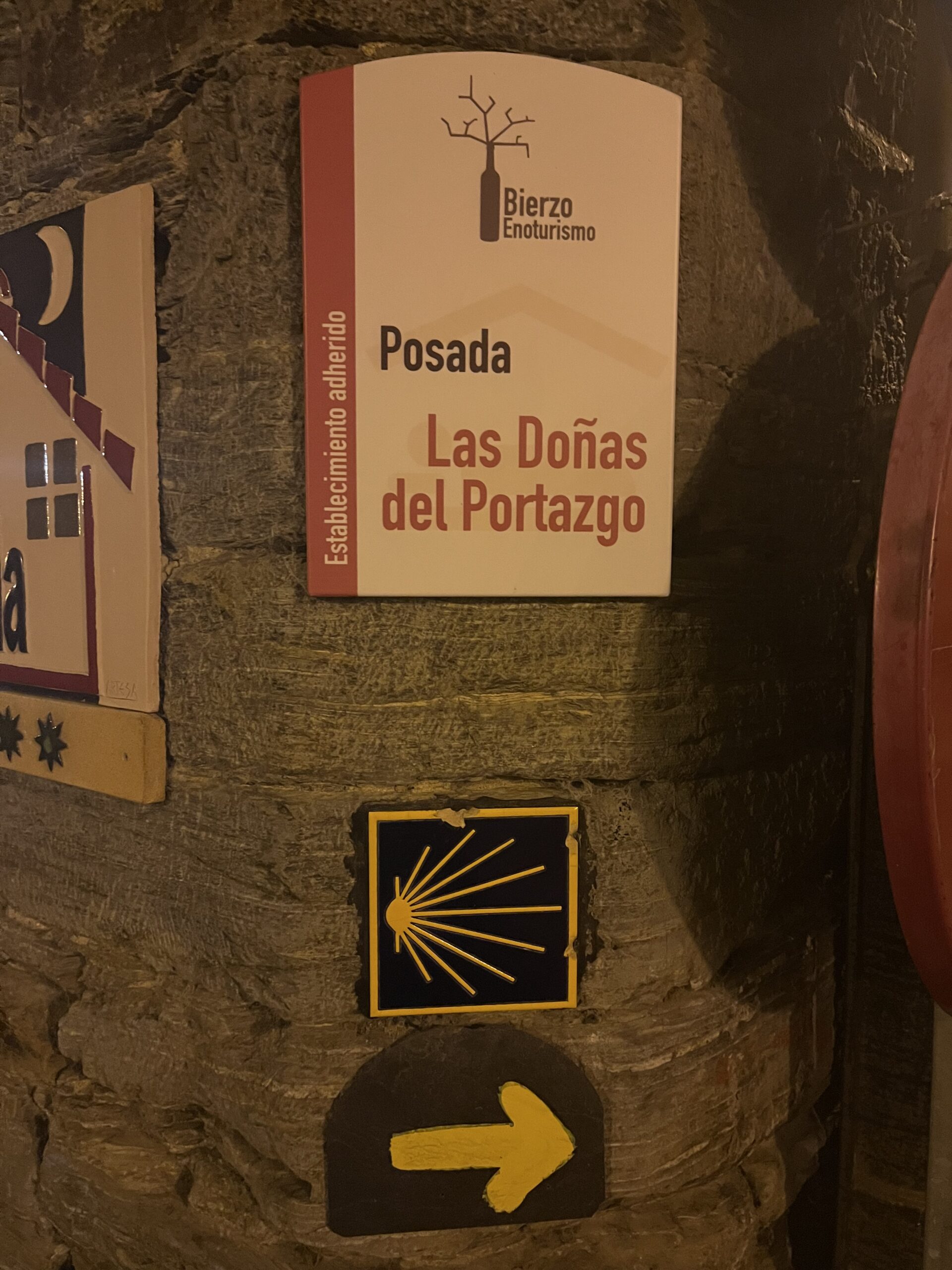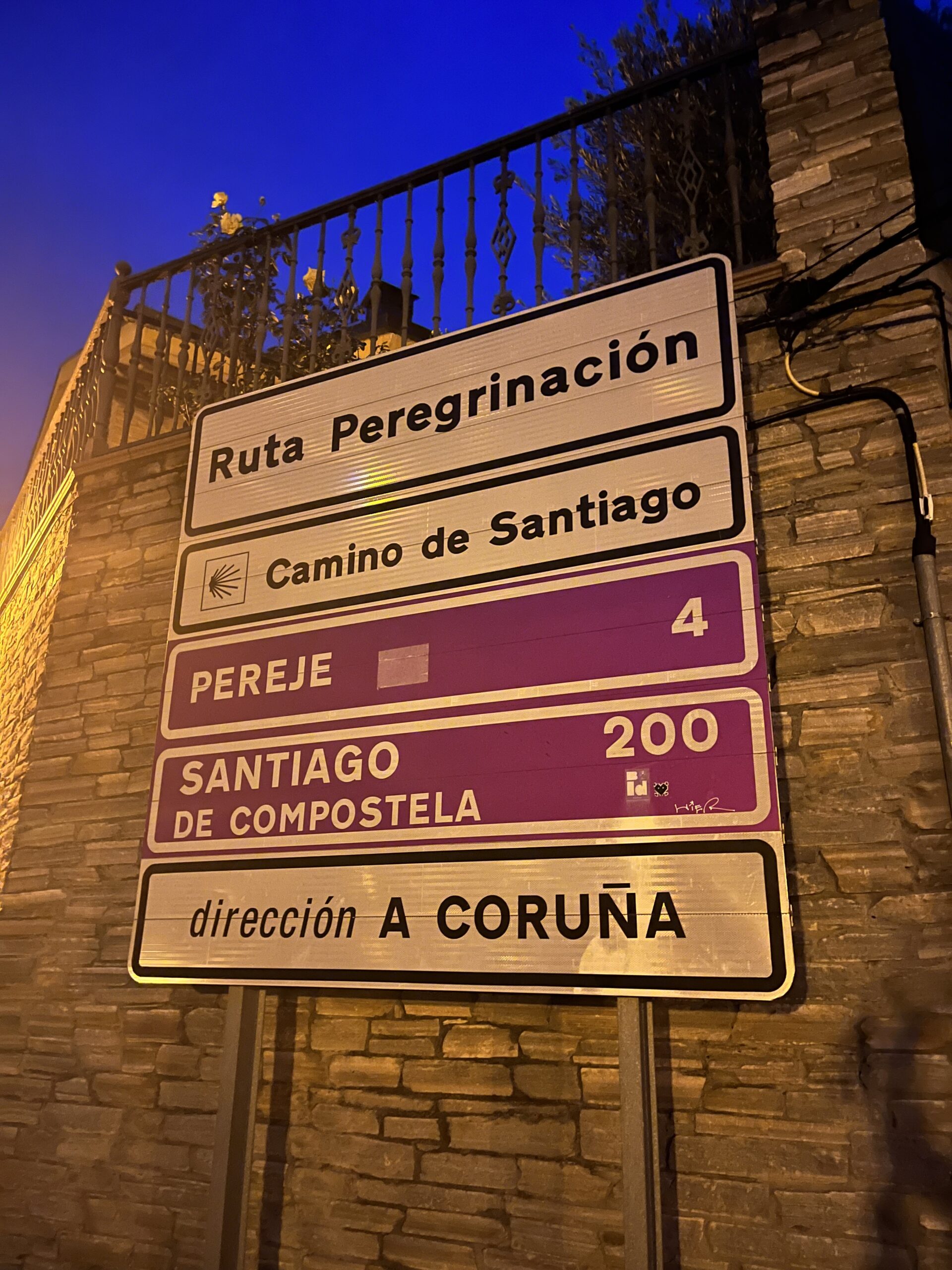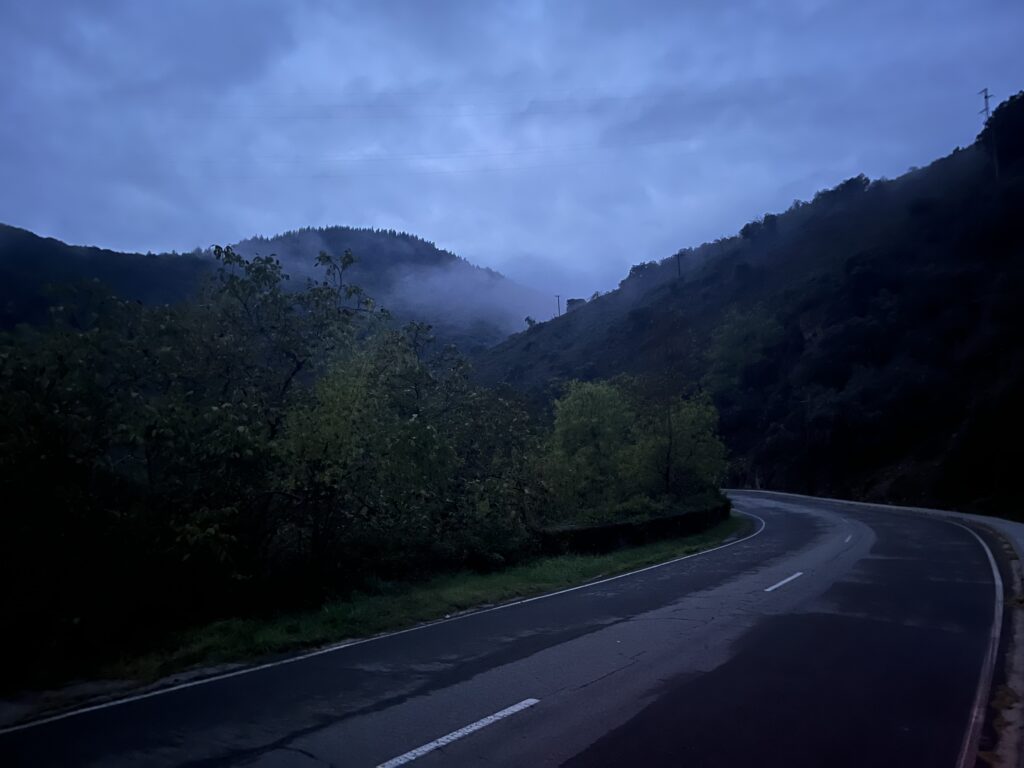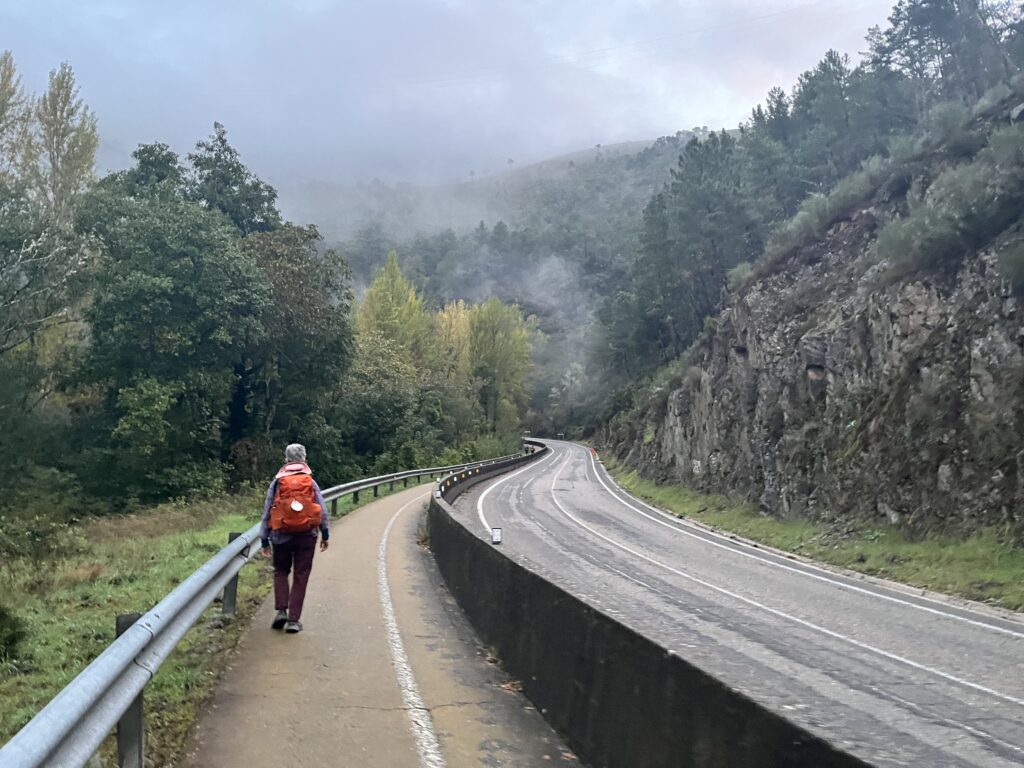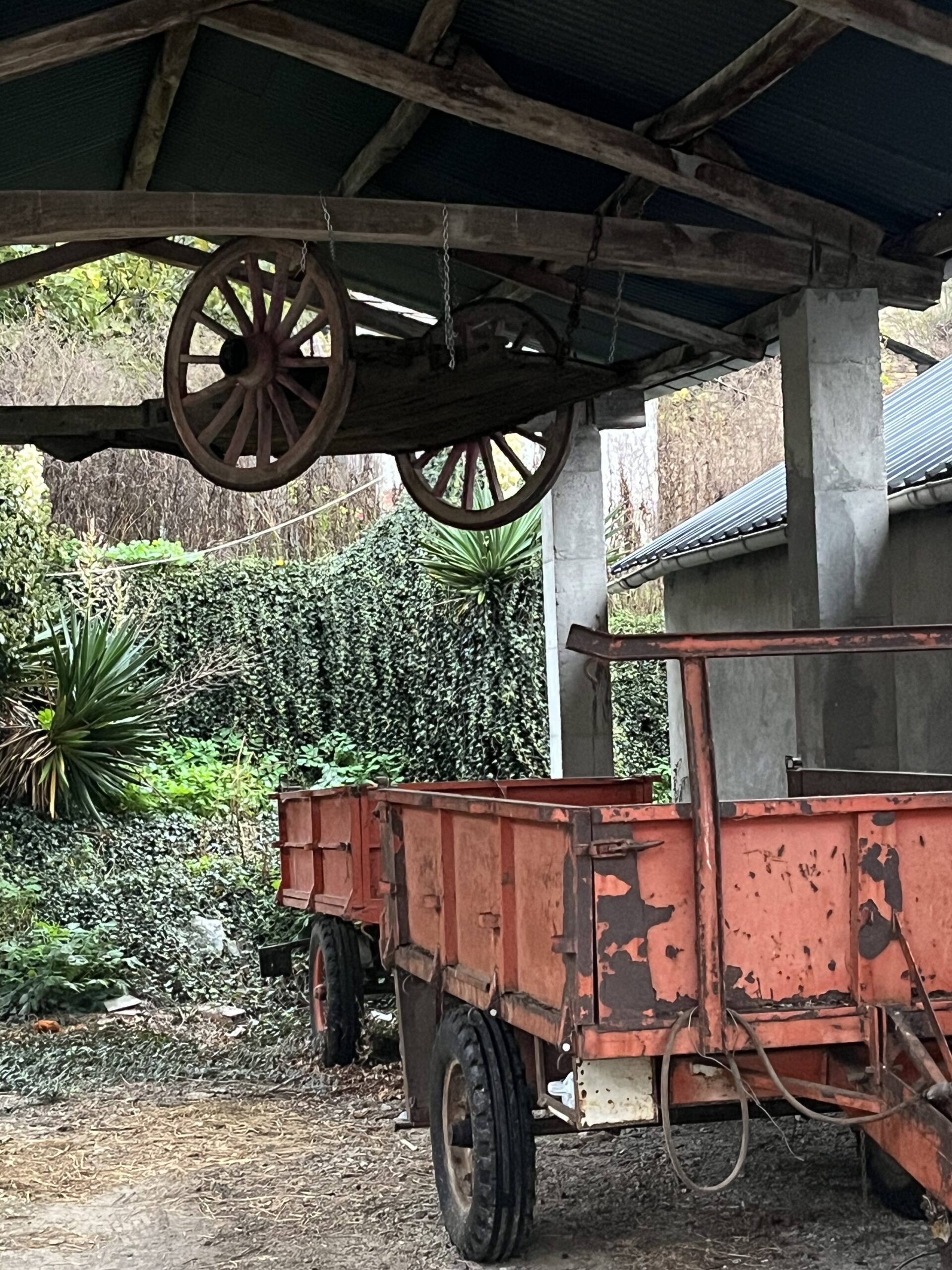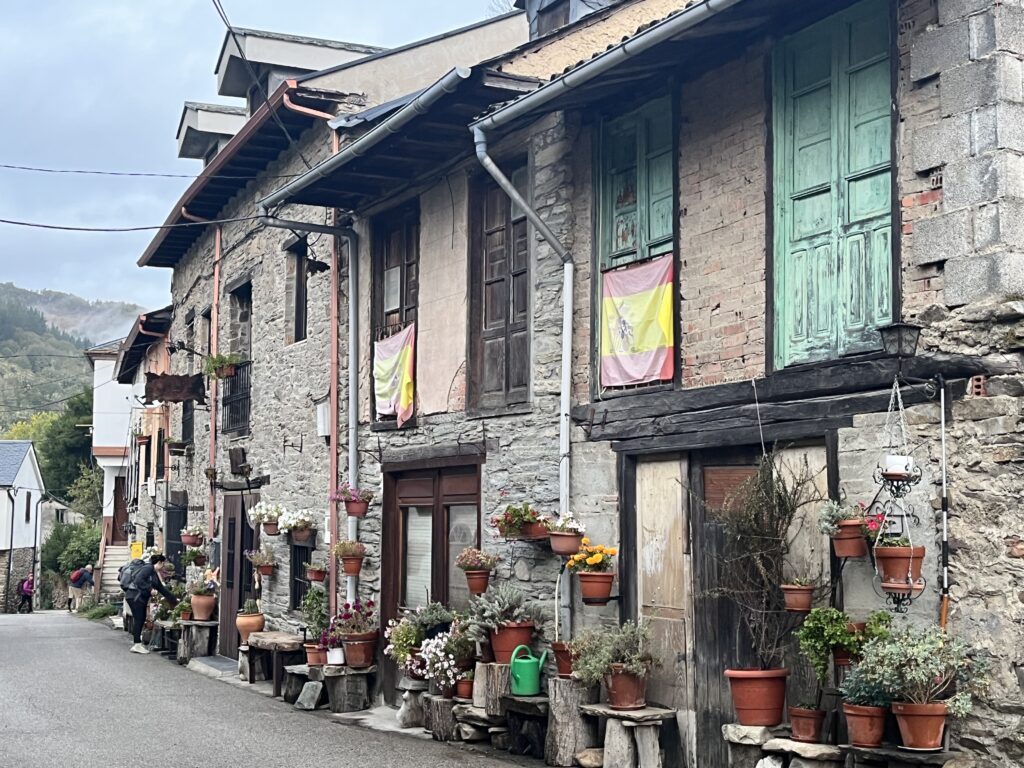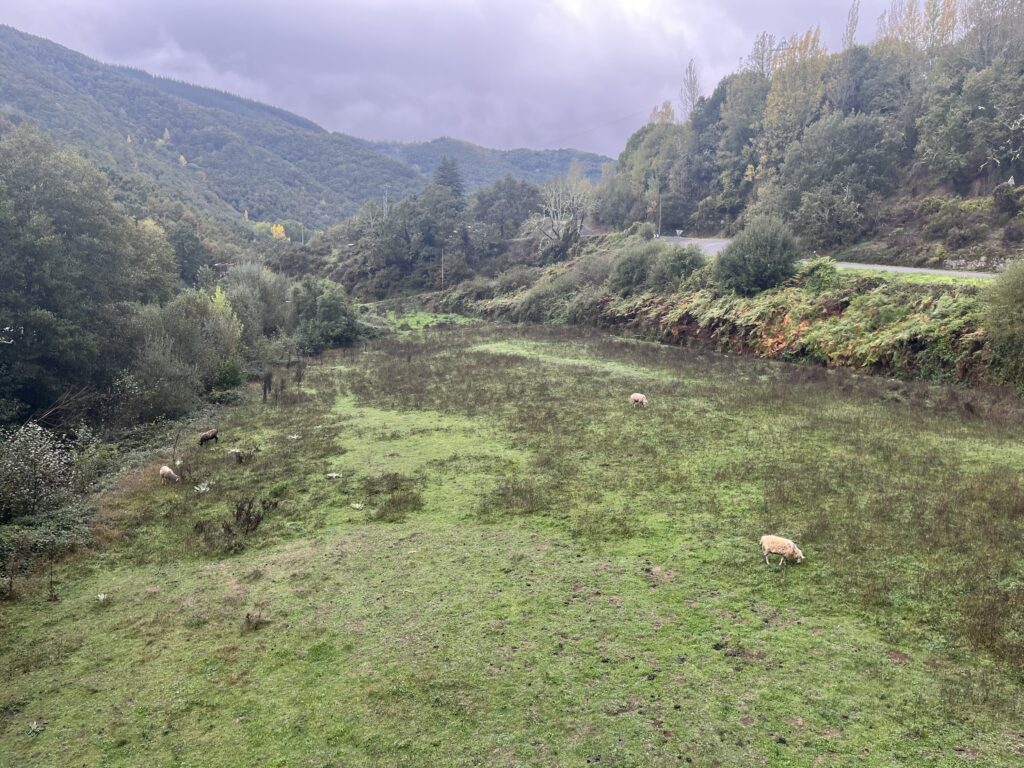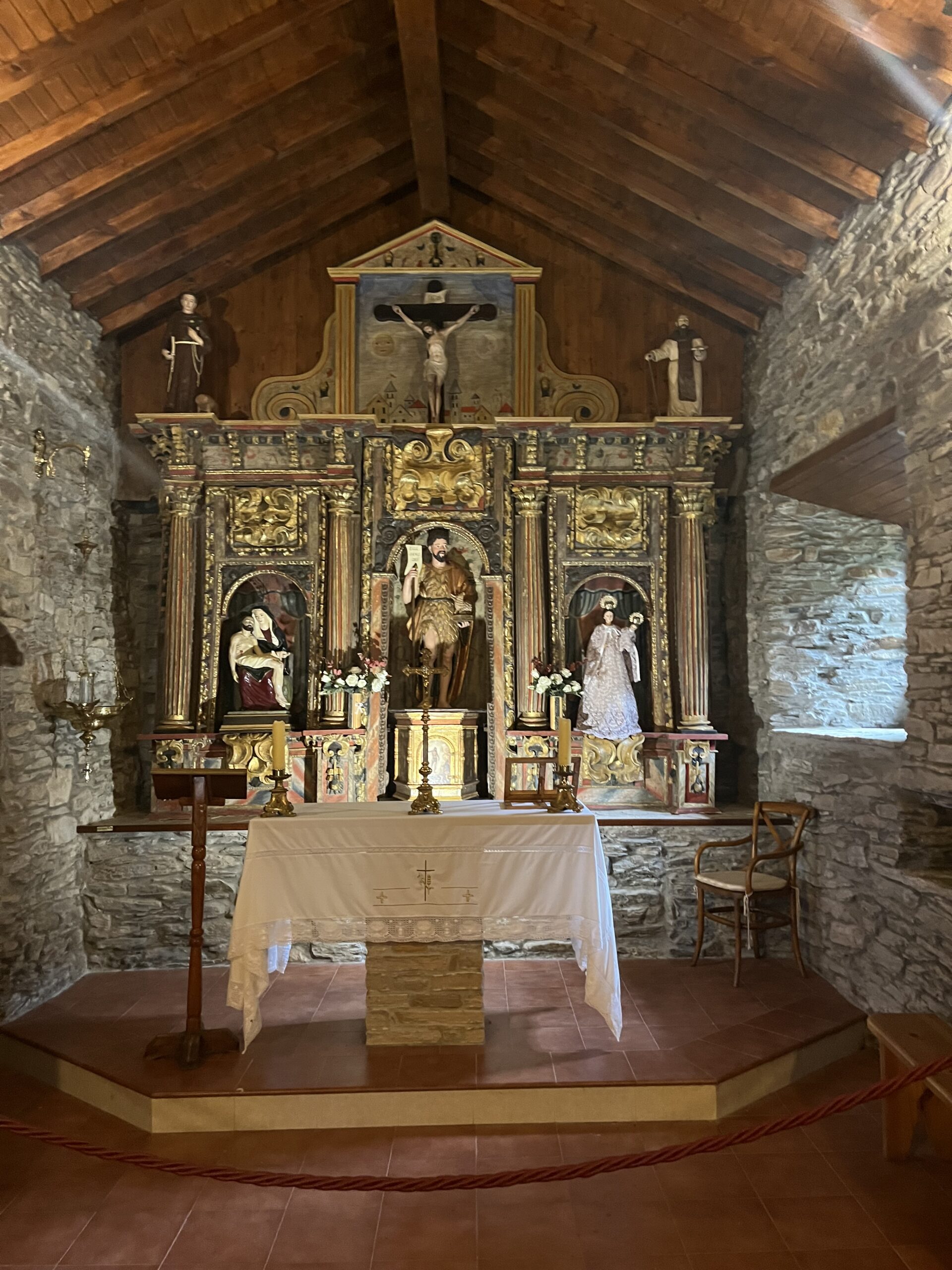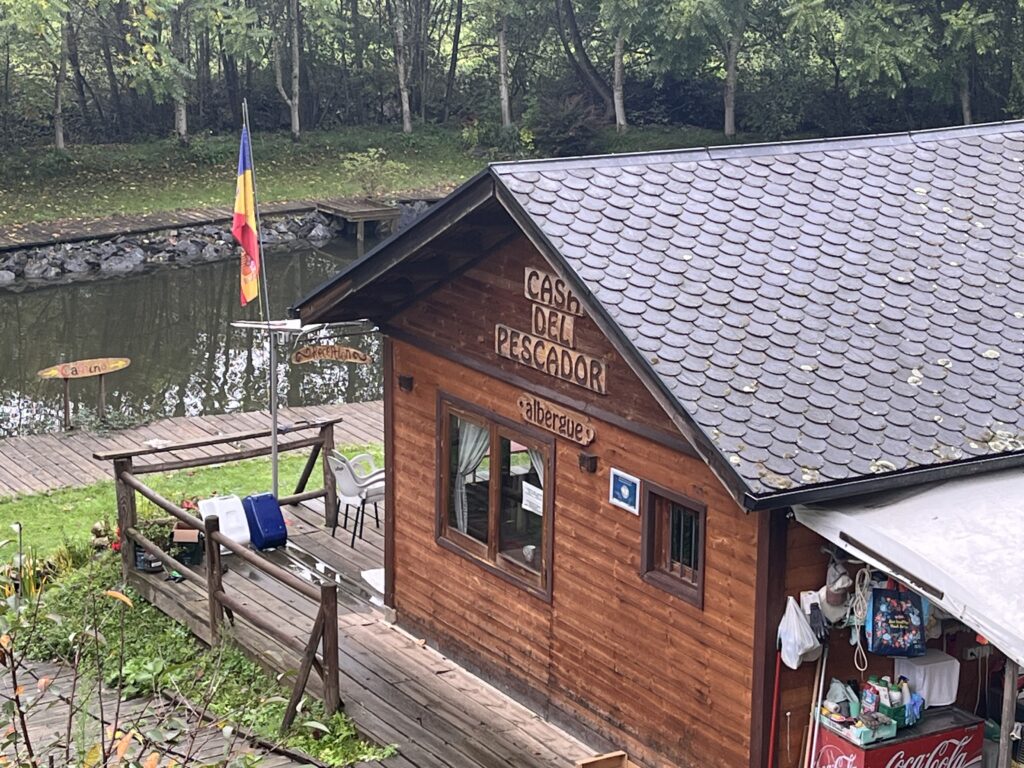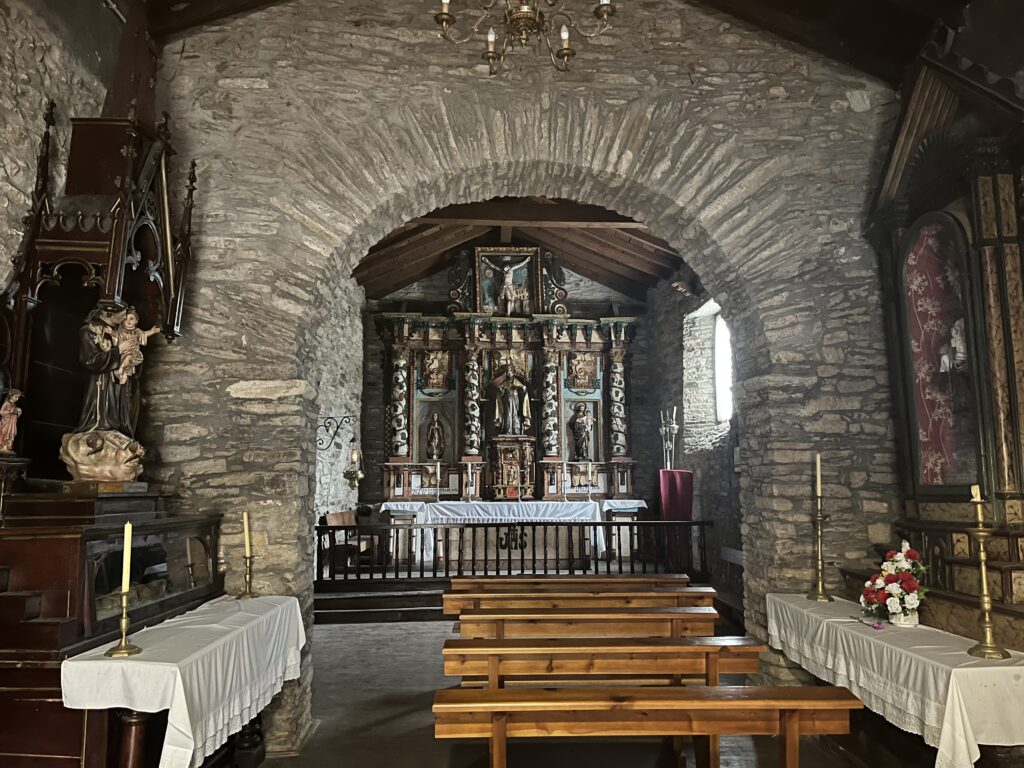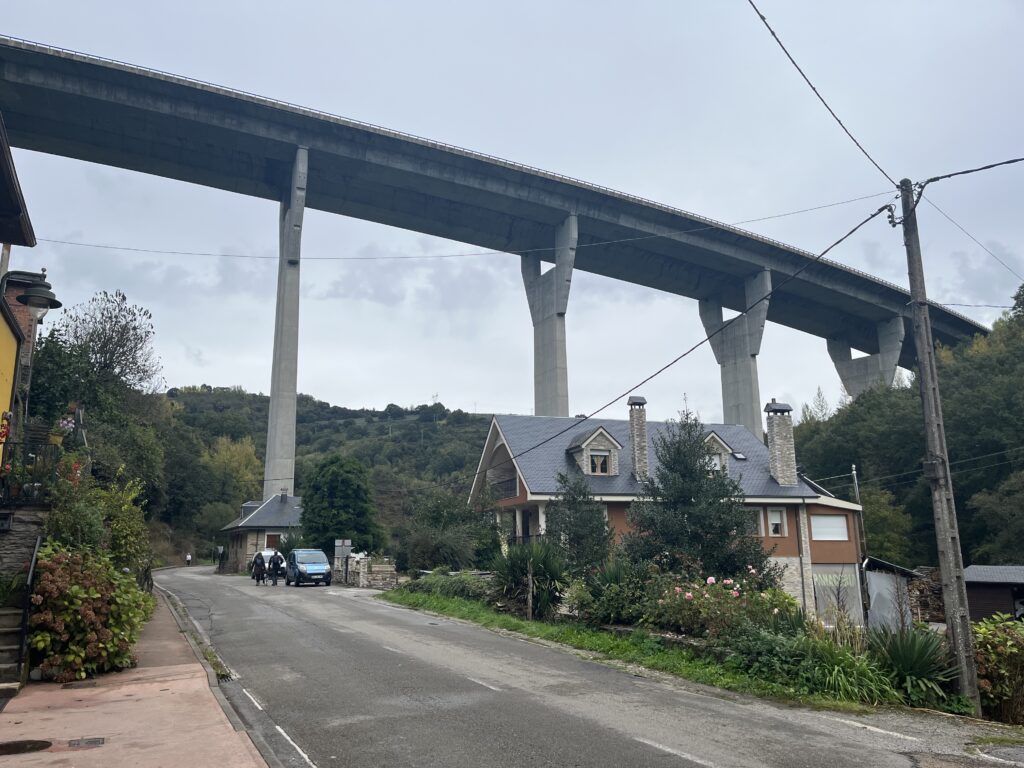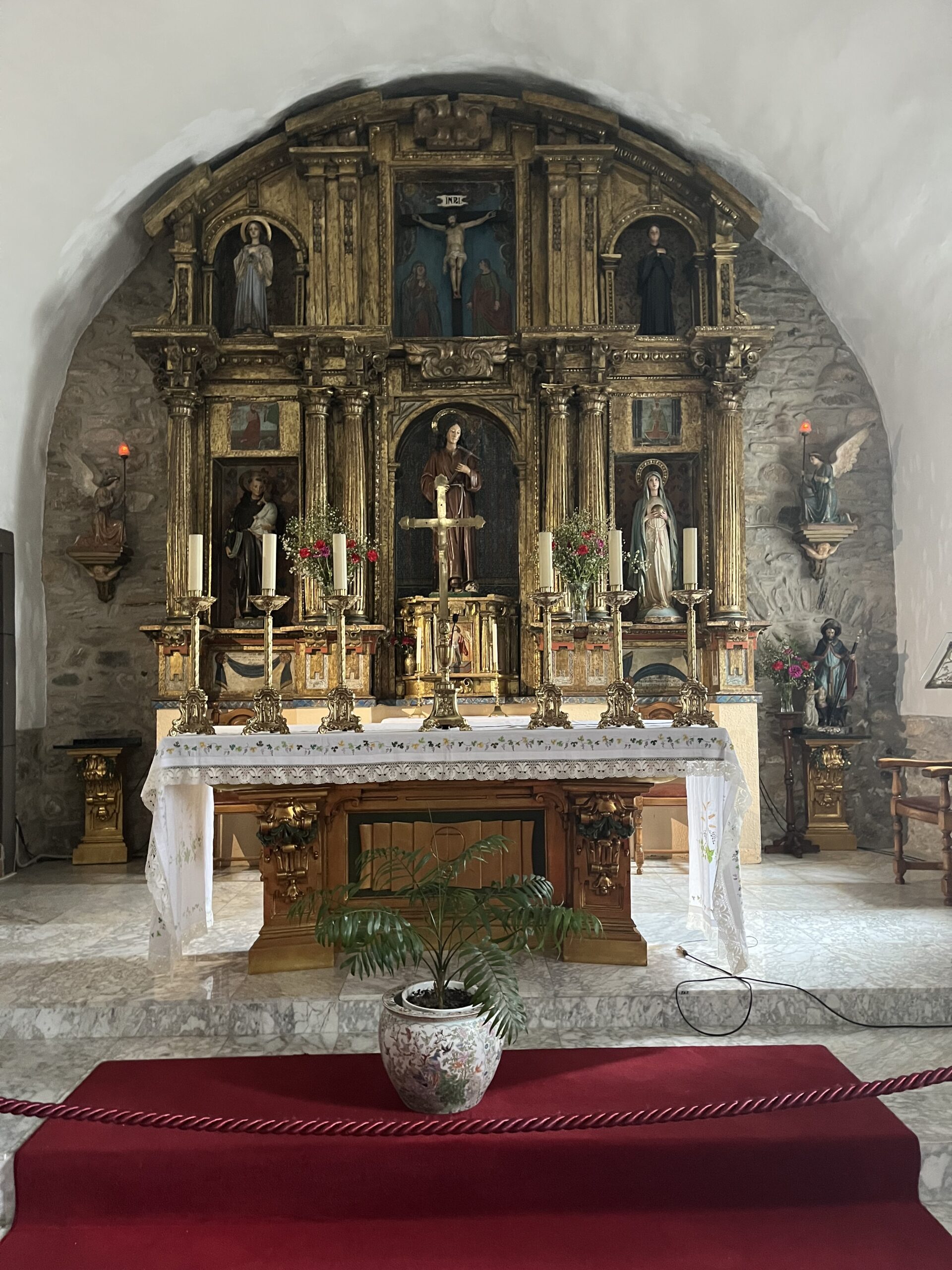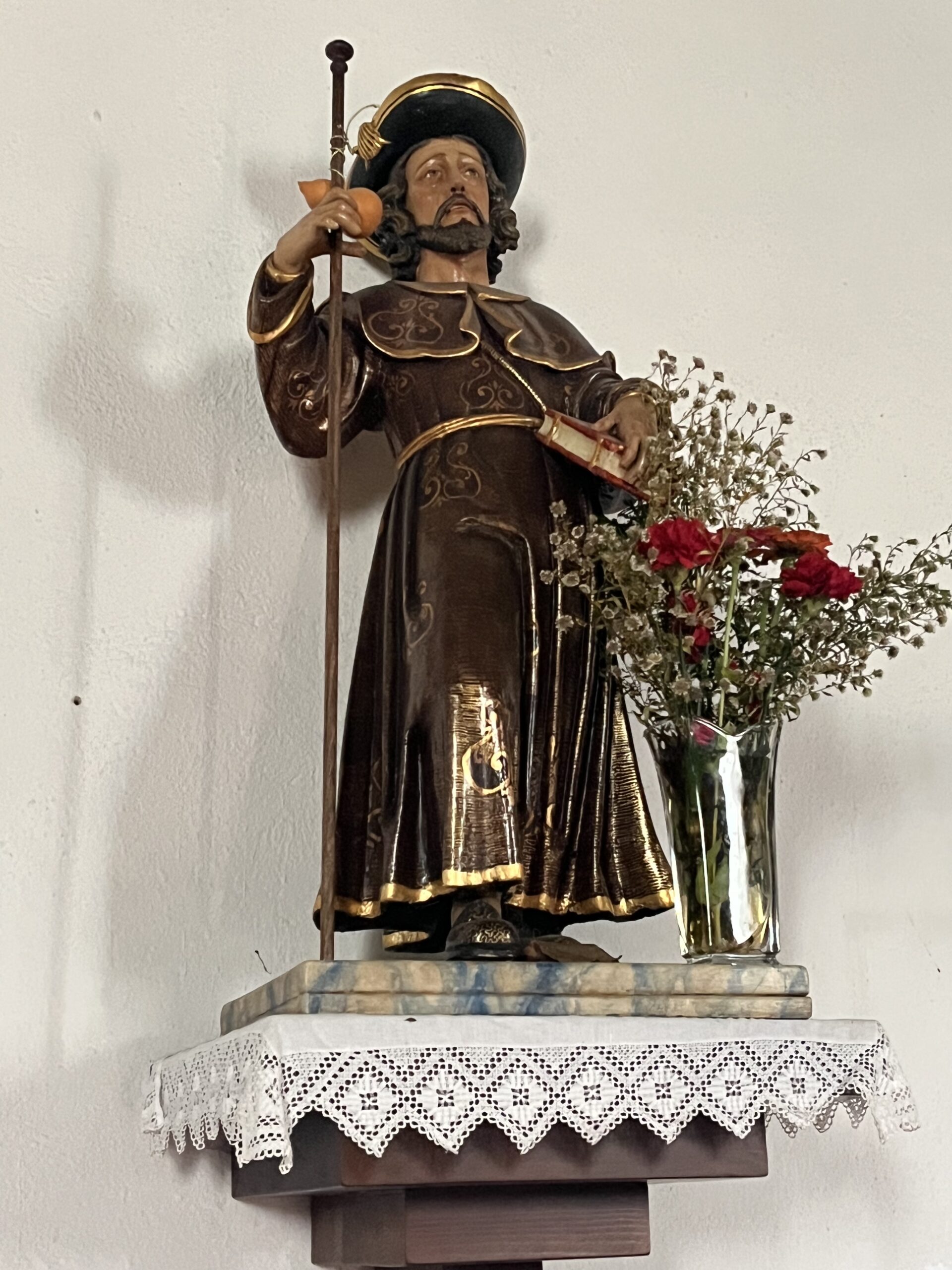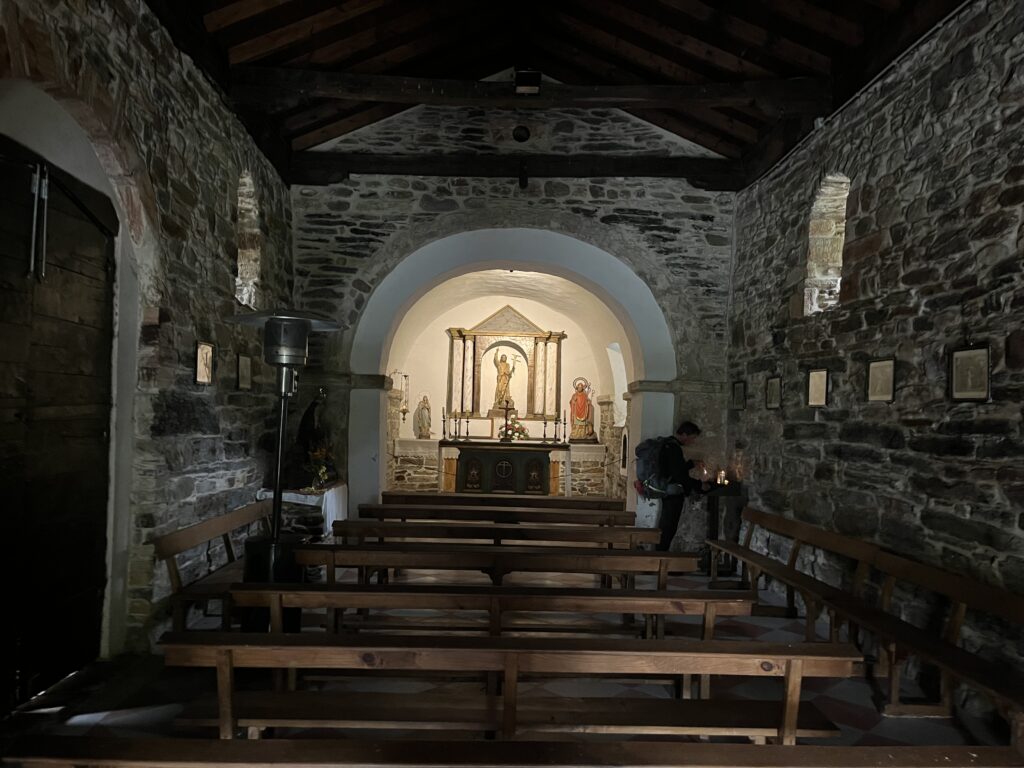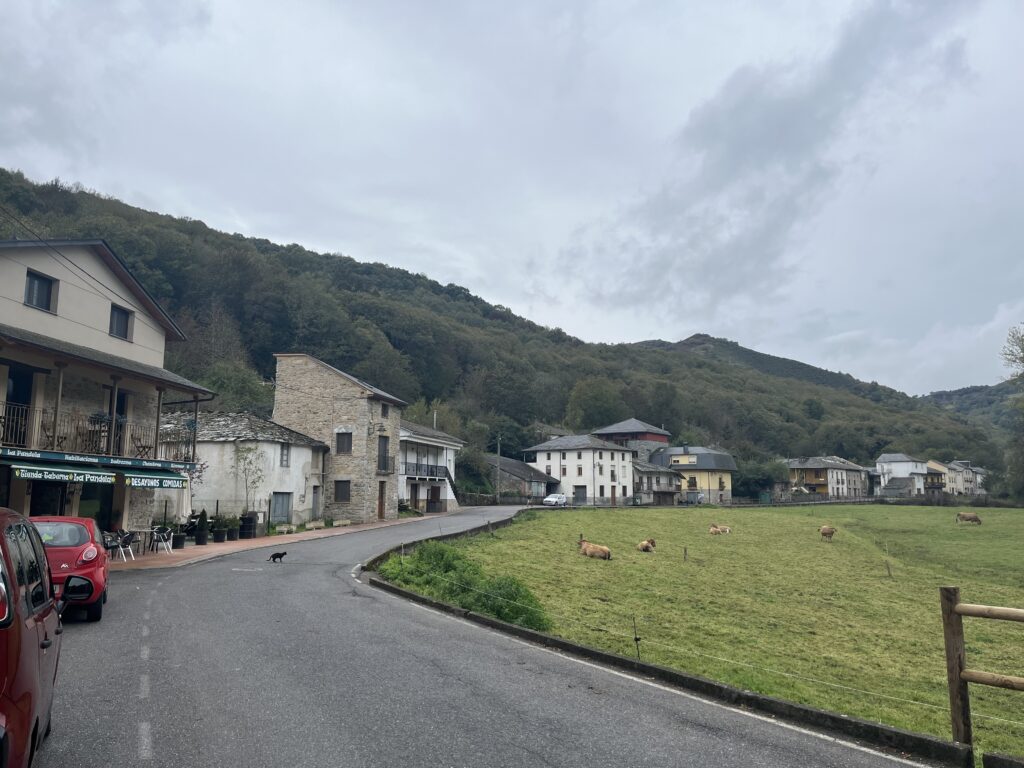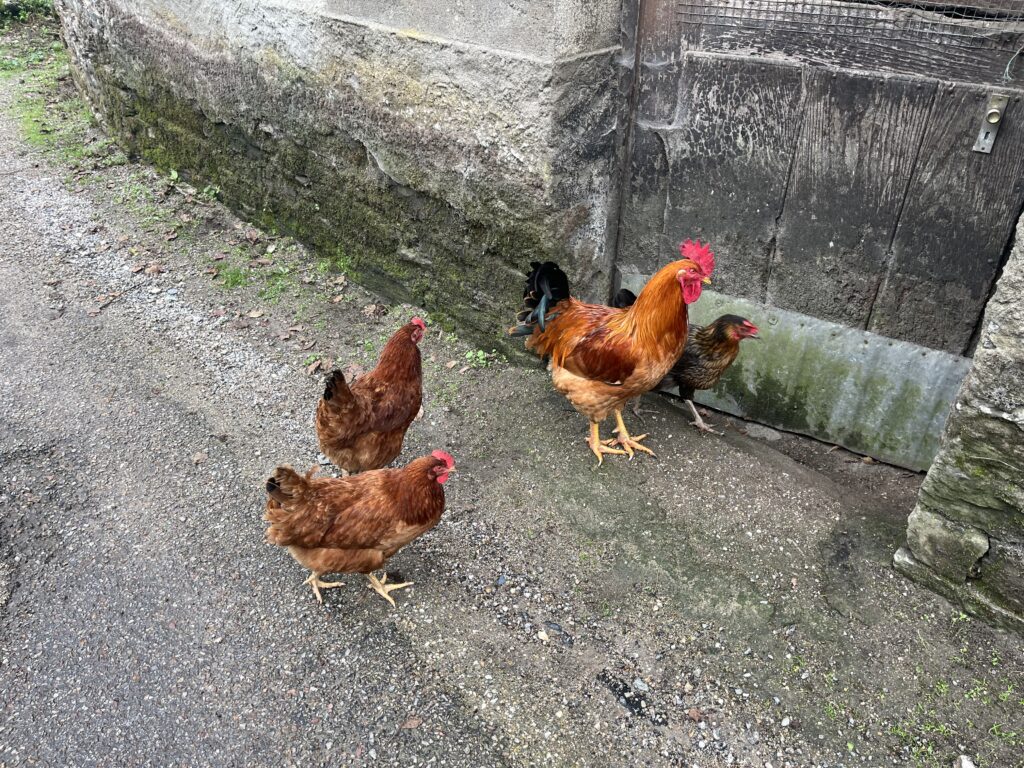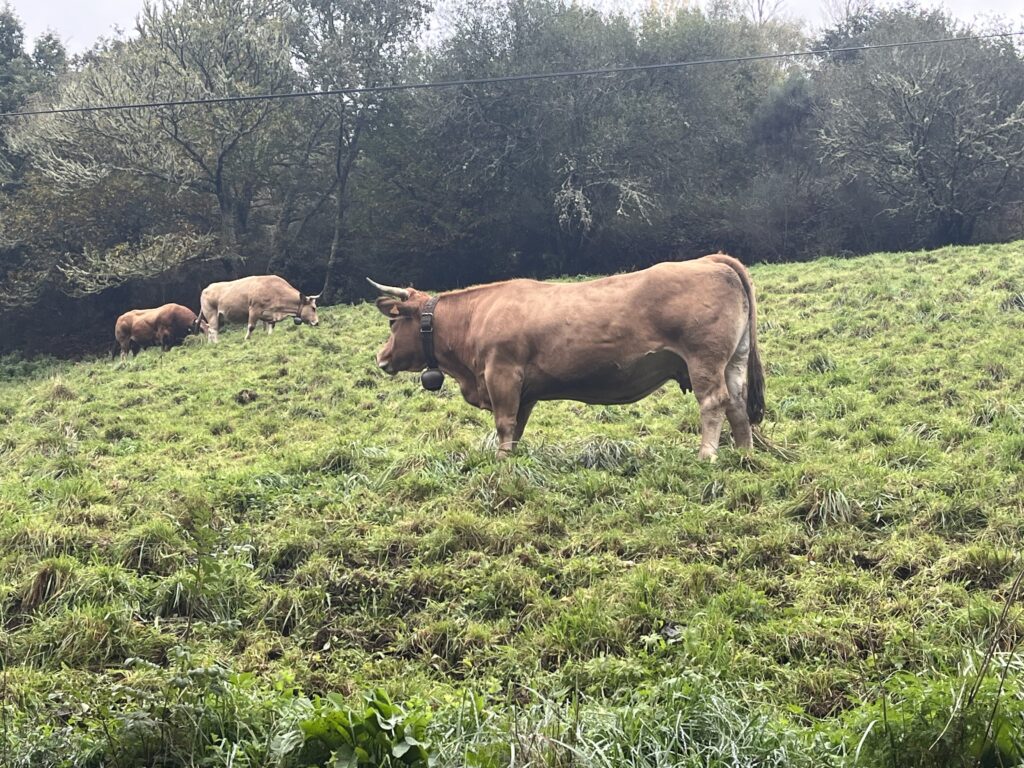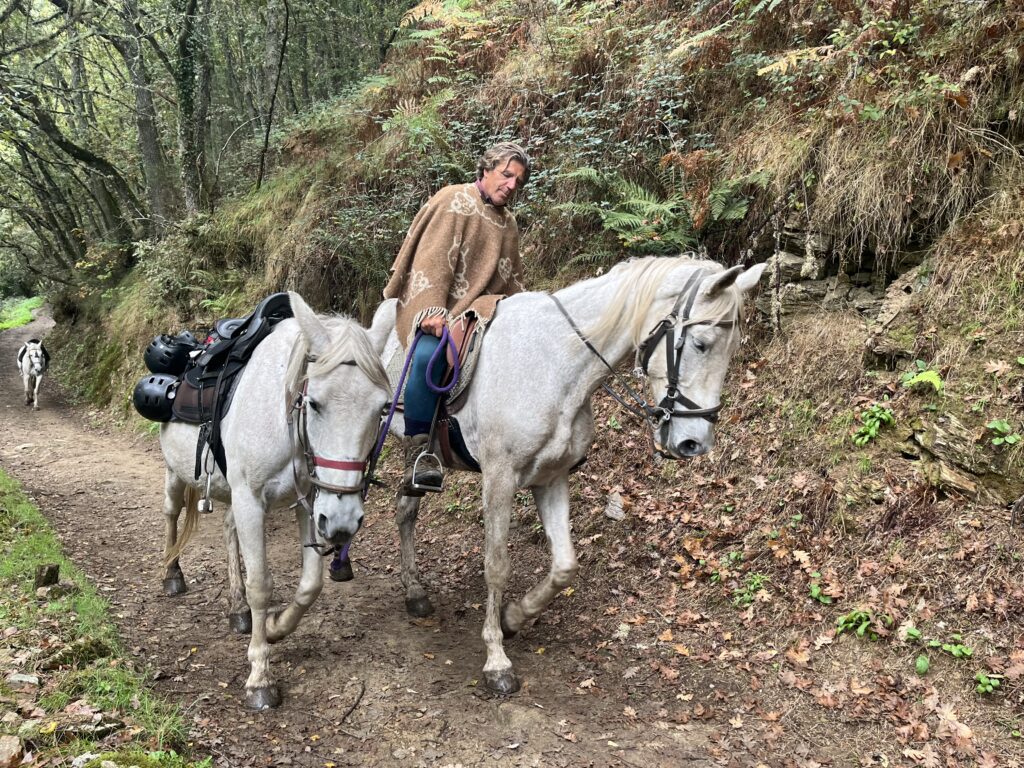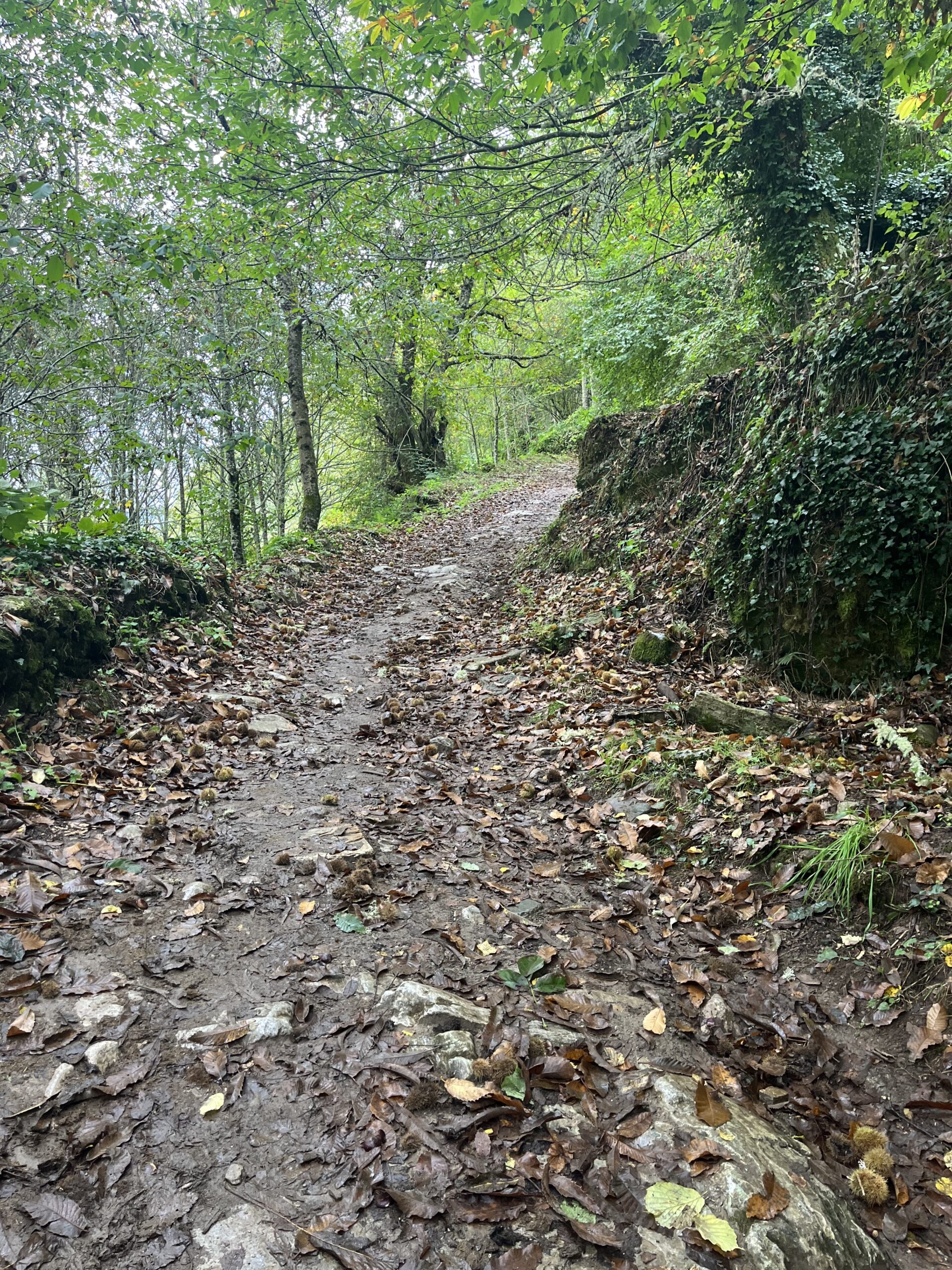Via Podiensis: Up into the Hills Again
For no good reason, this morning I woke up at 4:30. I went back to sleep, and then wasn’t up until 6:30. I left about 7:15. Tara left about the same time I did, but she wasn’t going to stop for breakfast.
The rain had stopped, but everything was damp as I walked through the town, with only the street sweepers and occasional pilgrims on the narrow, twisty streets. The Camino crossed a stone bridge over the Río Burbia.
I passed by one of the churches I did not visit yesterday, that of the Convento de La Concepción. It was locked. I got my first breakfast at the café nearby.
It was 8 o’clock before I left the café, and still dark. I would’ve left earlier, but there was something wrong with the sternum strap on my pack this morning. Somehow, the buckle has gotten twisted. I fiddled with it for entirely too long without actually fixing it; it will require a sit down, probably with a pair of pliers. Anyway, it works, it just looks funny.
I passed a sign as I was leaving town saying that Santiago was only 200 km away. I don’t know how I feel about that. I’ve been on the road for a very long time, now, and even though I speak to her every day, I still miss Francine. I also miss my home and my family and friends and even those irritating cats.
On the other hand, I’ve been doing this so long I’m not sure how to work and live in any other way now. It will definitely be an adjustment when I get home. And it’s going to take me a long time – a very long time – to process the thoughts and insights of this pilgrimage.
I continued walking the sidewalk right out of town along the road and into the dark and misty hills.
About two kilometers later, the sidewalk ended. Now there was some walking on a protected shoulder of a rural highway.
It was light enough now that I put away the flashlight. The skies were overcast, and the air was muggy. For a while, I walked with the road and the looming cliffs beyond on my right, and forest on my left, where I could sometimes hear rushing water below.
The road we were on was roughly paralleling a major highway. This would occasionally pass over us on tall flying bridges. If I’m honest, it always makes me nervous when we go underneath them.
About 8:45, the Camino crossed the road I was on, and now I was roadwalking through the forest on a little one-lane blacktop.
Moments later, I walked into a little village of Pereje. I think that this is the first place on this Camino I’ve seen a sign defaced to change the name of the town to its Galician spelling, in this case Perexe.
There isn’t much to this tiny little village. Both the church and the one café were closed. As I left the village, I noticed an albergue, which also had a closed sign on the door. I wonder what’s going on in this little village?
After running the length of the village, the Camino again crossed over the road and I found myself once more on a protected shoulder between the road and the river. This is the Río Valcarce, and I would be dancing with it the remainder of the day.
Once again, at about 9:25, the Camino crossed the busy road and wound its way down a one lane blacktop. This route was through a beautiful forest of chestnut trees along the river.
By the time I got to Trabadelo at about 9:35 or so, I was feeling pretty warm and in need of a second breakfast. I had already walked almost 11 km, which was (depending on where I ended up today – more on that later) either slightly less than half or slightly more than a third of the day. The muscles that bothered me yesterday were still bothering me, but not nearly as badly. All this walking on pavement, though, had not been great for my feet.
At the café I ran into Tara, who was just leaving, and Fern from Korea and Sue from the UK. It’s nice to see familiar faces, even if only in passing.
The village church here supposedly dates back to the 10th century, at least parts of it do. It was, predictably, locked. But I prayed for the intentions of the Camino here regardless.
Of course, I stayed entirely too long at breakfast, but once I was on the road again I was feeling strong. I still wasn’t sure how far I was going today.
My original plan on my spreadsheet was to stop at La Faba at the bottom of the hill leading up into the region of Galicia, and take the hill first thing in the morning.
But I do love the little Galician village of O Cebreiro at the top of the hill, and it looks like there are more beds available there. On the other hand, that is a heck of a hill to be doing at the end of the day.
After the village sidewalk ended, it was roadwalking for a bit. I could see the major highway off in the valley to my left, but other than that the road was surrounded by forested hills.
Finally, about 10:45, the Camino left the road for a brief sojourn on a dirt path, which led me back to the protected shoulder on the two-lane highway. Again.
I had already lost track of how many times I crossed the river this morning, but here I crossed it again. Somewhere in the valley below the bridge, I heard the melodic clunk of cowbells.
Minutes later, I crossed over the river again. That is one meandering river! This time, I could see sheep grazing in the valley below. The road would cross over the river many more times before the day was through.
After passing through a large truckstop, the Camino turned into the little village of La Portela de Valcarce. There would be a number of these little villages today, all no more than a few kilometers apart.
I stopped to pray in the little village church. It was a beautiful little space, dedicated to San Juan Bautista.
The Camino continued out of the village along the two-lane road, but now there was no longer a protective barrier at the shoulder. At one point I passed an albergue that appeared to be flying the flag of the old Spanish republic.
As I approached the village of Ambasmestas at about 11:25, all pretense of shoulder vanished, although there was a bit of a sidewalk as the Camino passed over the river again.
I stopped to pray at the little village church. The Baroque retablos in the sanctuary featured an image of Saint Peter vested in cope and papal tiara. I don’t know why that struck me – I’m sure I’ve seen that imagery before in Spain – but it just sort of profoundly hit me as I was there praying.
After the village, it was back to roadwalking.
There’s a couple from Virginia, Bob and Brenda, that I keep catching up to on the stretch, and then falling behind as I pop into churches while they keep walking. I’ve passed them once and almost caught up to them twice more. I first met them at dinner in Astorga.
Many people comment on my walking speed as I pass them, and I always explain, “I walk fast, but I stop a lot”.
I entered the village of Vega de Valcarce at about 11:35. A flying freeway bridge runs over the top of the valley here, looking like some sort of giant Roman aqueduct. It’s a little unnerving to see the buildings so far below it.
I stopped to pray in the little village church, which has a rather fine statue of Santiago and a lovely sanctuary, even if it appears that some of the panels on the retablos are upside down!
Far above the town on the steep hill are the ruins of a castle. Although it is called Castillo de Sarracín, the castle has nothing to do with the Saracens, except perhaps that the Moors destroyed the original Christian castle on this site in the year 714. It was rebuilt by a Christian Prince named Sarracino Gatónez, Count of Bierzo and Astorga, in the ninth century and named for him. Most of the visible ruins are an expansion built in the 14th and 15th centuries.
After leaving the village, it was back to roadwalking once more. At some point, though, the road did develop a bit of a shoulder, which was nice. The river continued to flow on my left, and sometimes there would be small herds of cows lazing about in the meadow nearby.
Shortly after passing a particularly photogenic meadow of cows, I entered Ruitelán, another village directly under flying freeway bridges. I prayed at the simple, somewhat rundown little parish church.
Given what I’ve experienced throughout much of Spain, I am pleasantly surprised at how many of these little churches are open.
After the village, there were at least some stretches with a protective barrier between the Camino and the road, for which I was grateful.
I crossed the river (really more of a glorified stream at this point) to enter the quaint hillside village of Las Herrerías at about 12:50. If you are so inclined, you can rent a horse here to take you up the hill to O Cebreiro. I was not so inclined, as I suspect that would be just as exhausting as climbing the hill yourself.
The Camino followed a rough one-lane asphalt road out of the village, crossing the river a few more times in the process, before heading sharply uphill.
I was a sweaty mess by the time that the Camino left the road for its final approach into La Faba on a dirt path through the forest. On the way up this trail, I passed some horses on their way back down.
And then I turned the corner and found myself facing the sort of rocky, muddy forest climb that I don’t believe I have seen since I was in France. And it was steep.
Fun fact: if you get enough mud on them, it’s impossible to tell fallen hazelnuts from horse droppings.
By the time I stumbled into the village at 1:45, I had made my decision. La Faba and no further.
I checked into the albergue parroquial, which is run by the German Confraternity. It’s next to the 18th century church of San Andrés, which I plan to visit after the usual pilgrim ablutions.
Today was day 60.
Date: 16 October 2023
Place: La Faba
Today started: Villafranca del Bierzo
Today’s Photos!
